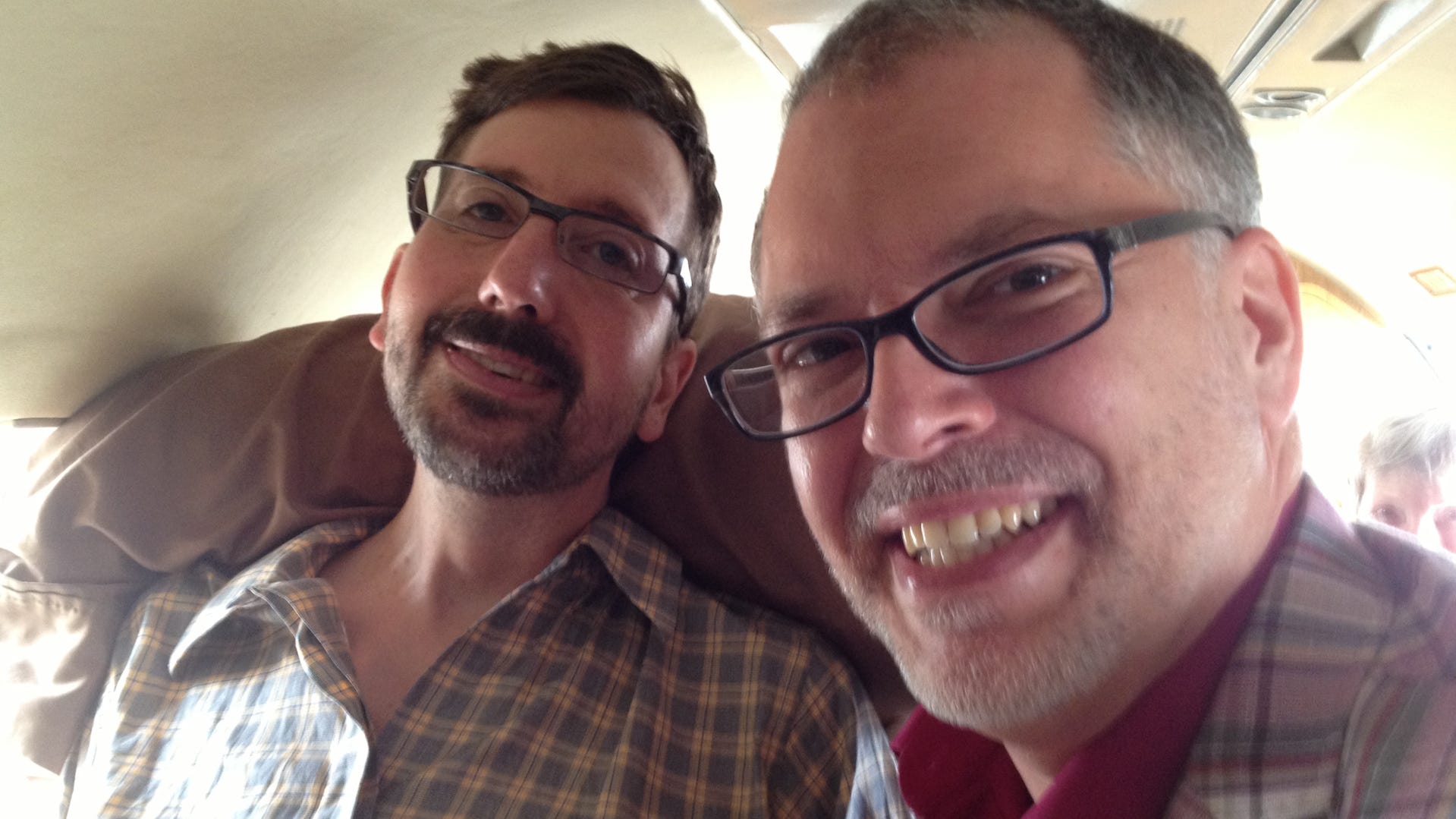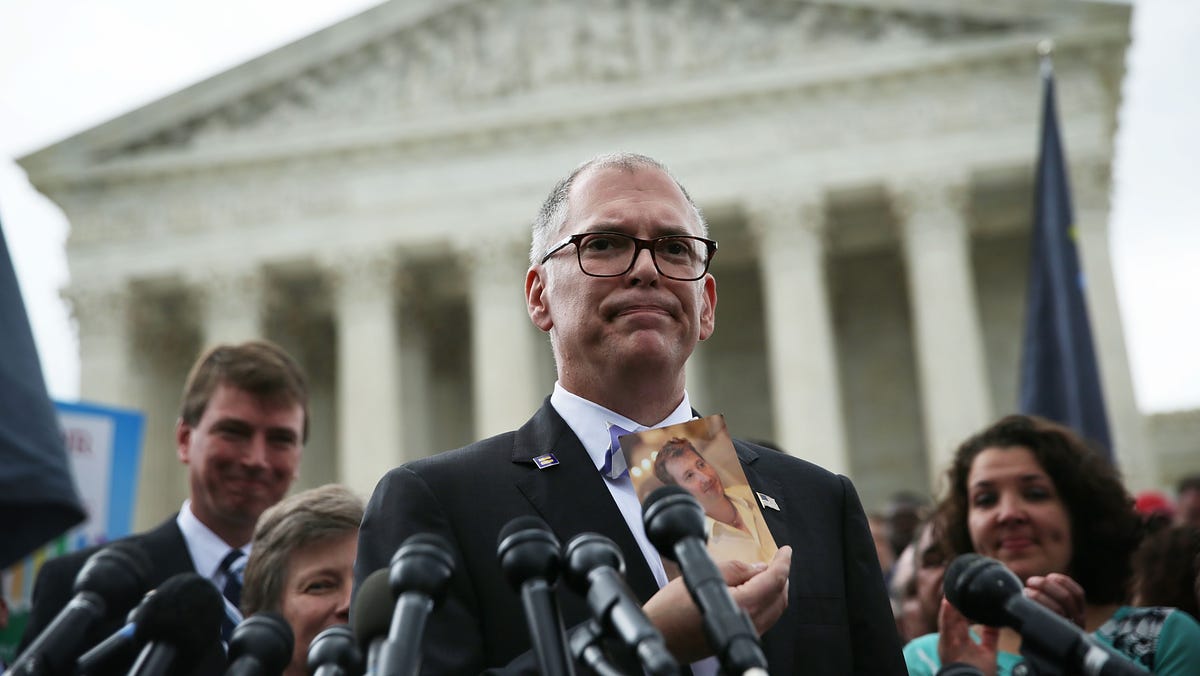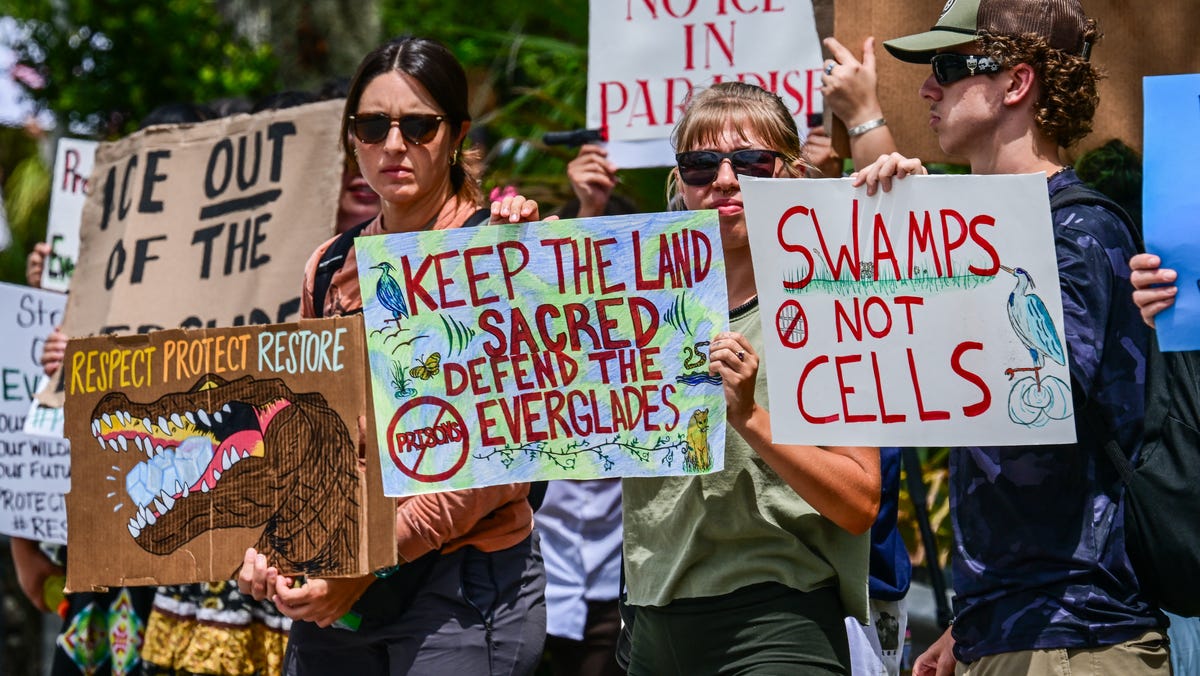10 years on, as we reflect on Obergefell v. Hodges and those who are finally able to marry the person they love, I’m honored to have played a small part, even if it was from the other side of the ‘v.’

Jim Obergefell talks LGBTQ+ rights 10 years after Supreme Court ruling
Jim Obergefell, the lead plaintiff in the Supreme Court case that legalized gay marriage nationwide, looks back on its impact 10 years later.
Ten years ago, my name was one of the two associated with one of the most significant Supreme Court cases in modern history: Obergefell v. Hodges. The outcome granted same-sex couples the right to marry nationwide, transforming the lives of so many in a deeply personal and profoundly legal way.
But the truth is, I never intended to be a part of history. Not because I opposed marriage equality. I never did. In fact, I supported same-sex marriage before my name was ever attached to the case, despite being cast as the face of the opposition.
In August 2014, I was appointed director of the Ohio Department of Health. Not long into my tenure, legal counsel told me I would be named as the respondent in a fast-moving legal challenge related to Ohio’s same-sex marriage, one that they added was likely to reach the Supreme Court.
My name was the ‘opposition’ to marriage equality. But I never opposed it.
At the time, I hadn’t even heard of Jim Obergefell, the plaintiff who was taking legal action against Ohio’s refusal to put his name on his late husband’s death certificate, John Arthur, because of the state’s ban on same-sex marriage.
I remember saying, “Wait, what have I done to be involved in this?” But that’s how the legal system works. The case was already underway. The court needed a named state official to represent the law being challenged, and as director of the Department of Health, that person was me.
I had taken an oath to defend the Constitution and the laws of the state of Ohio, regardless of personal opinions. While those laws did not yet recognize marriage between same-sex couples, I saw my role as administrative and procedural, not ideological. My job was to ensure everything proceeded in an orderly fashion. If the court ruled against the state, as we expected, it would be easy for us to comply immediately.
Behind the scenes, my team prepared for that outcome. We didn’t want to wait 90 days or longer to implement a ruling, but rather, we worked quietly and diligently to update forms, systems and procedures. When the decision came down, we could honor it without delay. It was important to me that we show respect ‒ not just to the law, but also to the people whose lives would be changed by it, including many of our staff members.
On June 26, 2015, when the ruling was handed down, I was in a meeting when one of the attorneys walked in and said, “We lost.”
I nodded and simply said “OK” before authorizing the release of all the preparations we had already made. I didn’t get the historic calls from then-President Barack Obama that Jim Obergefell received. Rather, I did my job to ensure quick compliance ‒ and with relief that the case was resolved and that many people’s lives had changed for the better.
From a strange role in history came an unlikely friendship
A few days before the ruling, a lifelong friend of mine in a same-sex relationship called and said, “Rick, when are you going to lose, because I want to be the first person in Ohio to get married?” I laughed and reminded him that I had no insight into the court’s deliberations. But then he asked me something I’ll never forget: “Will you read the Bible at my wedding?”
I agreed immediately.
Days after the decision, I read the Bible at my friend’s wedding. The ceremony was filled with joy, surrounded by friends, including, somewhat ironically, many top Ohio Republicans. It was a moment of real celebration, not just for him and his husband, but for everyone who had waited so long to be recognized by the law.
About ten months later, a mutual friend arranged coffee, and that’s when I met Jim Obergefell for the first time. I was a little nervous. After all, I was the named opponent in the case that resulted from the death of his husband.
But the moment we met, we clicked, and I told him I was glad he was doing well and that I had never been happier to lose in my life. From there, we became friends.
It’s a real friendship. Not just polite handshakes at public events, but phone calls, favors, lunches and showing up for each other in ways big and small. Jim has given me a platform to talk about the values I care deeply about: civility, dignity and respect for every human being. And sometimes even now, we speak together, not as plaintiff and defendant, but as two people whose lives were shaped by the same story from very different angles.
I never set out to be a part of a civil rights case. But I am proud of how I handled the responsibility. I’m proud that our team made it easy to comply with the ruling. I’m especially proud of the unlikely friendship that emerged from it.
Ten years later, we reflect on Obergefell v. Hodges and the people who were finally able to marry the person they love. I think about the sense of relief and the legal protections now provided to all married couples. And I’m honored to have played even a small part in that story, even if it was from the other side of the “v.”
This anniversary gives us the opportunity to set politics aside and reaffirm our commitment to protecting this constitutional right to marriage equality. A decade from now, and decades after that, all individuals can continue to enjoy their right to marry the one they love and experience all that comes with it.
Rick Hodges is the named defendant in the 2015 landmark case Obergefell v. Hodges, due to his former role as director of the Ohio Department of Health from 2014 to 2017, and is also a former Ohio lawmaker. Now an assistant clinical professor at Ohio University’s College of Health Sciences and Professions, he’s also the director of the Ohio Alliance for Innovation in Population Health (OAIPH) and the Ohio University Health Collaborative (OUHC).








